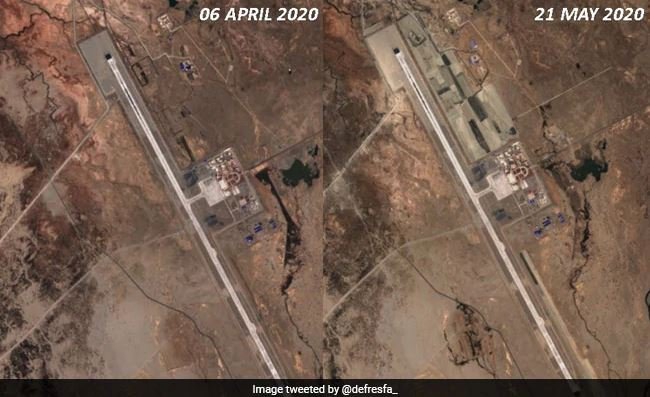China Expands Airbase Near Ladakh, Fighter Jets On Tarmac
The images have emerged amid a standoff between Indian and Chinese forces near Ladakh, described as India worst border tension since Kargil in 1999.
Satellite images show massive construction activity at a high altitude Chinese air base, located just 200 kilometres away from the Pangong Lake, the site of the skirmish between forces of India and China on May 5 and May 6.
Two images, exclusively sourced from the open source intelligence expert @defresfa_ , show the Ngari Gunsa airport in Tibet. The first image is dated April 6, 2020 while the second one, dated May 21, this year, shows massive construction activity including the addition of what appears to be a second taxi-track or a secondary tarmac to position helicopters or combat aircraft. A third image shows a close-up of the main tarmac at the airport with a line-up of four fighter jets believed to be either J-11 or J-16 fighters of the Chinese People’s Liberation Army Air Force.
The J-11/J-16 are advanced, domestically produced variants of the Russian Sukhoi 27 and broadly match the capabilities of the Indian Air Forces Sukhoi 30 MKIs, its most potent fighter until the arrival of the first batch of Dassault Rafales in a few weeks.
A caption on close-up image with the fighters indicates that their deployment at this base was first spotted in December 2019. The close up images now released help spotters identify the type of fighters deployed.
The location of the Ngari Gunsa air base is particularly significant. A dual-use military and civil airport which serves the town of Shiquanhe in the Ngari prefecture, the airport is located at 14,022 feet, which makes it among the highest in the world.
The advantage gained by its location close to the Line of Actual Control is balanced by the reality that fighter jets deployed at such an altitude can only carry limited war-loads and fuels.
”The useful endurance of Chinese J-11 or J-16 fighters deployed at such altitudes will not be more than an hour,” said Squadron Leader Sameer Joshi (retired), a former IAF fighter pilot and Kargil war veteran. ”The useful endurance of Indian Air Force fighters which deploy from multiple air bases in the plains could be up to three to four hours if air to air refuelling tankers are used.”


Comments are closed.